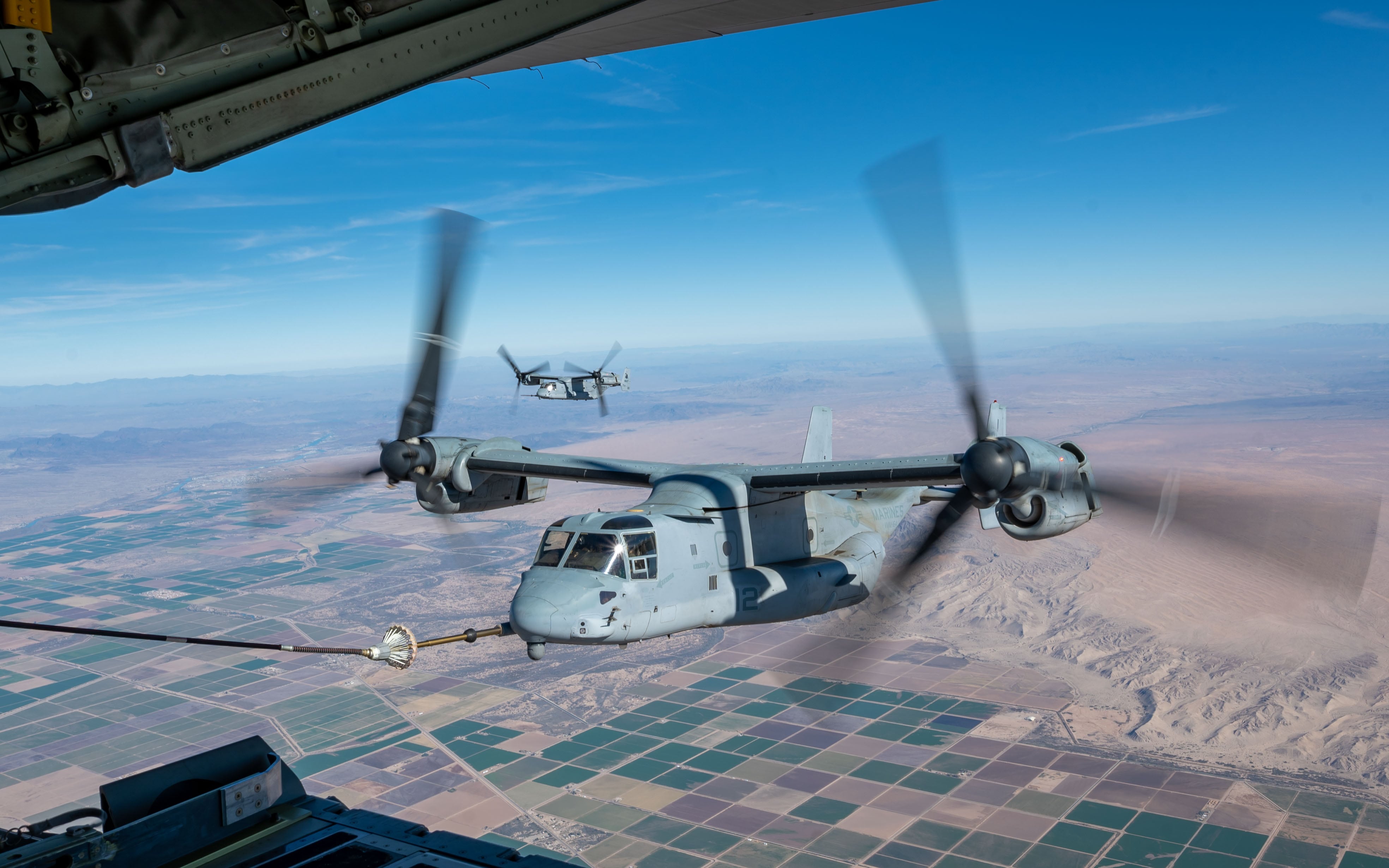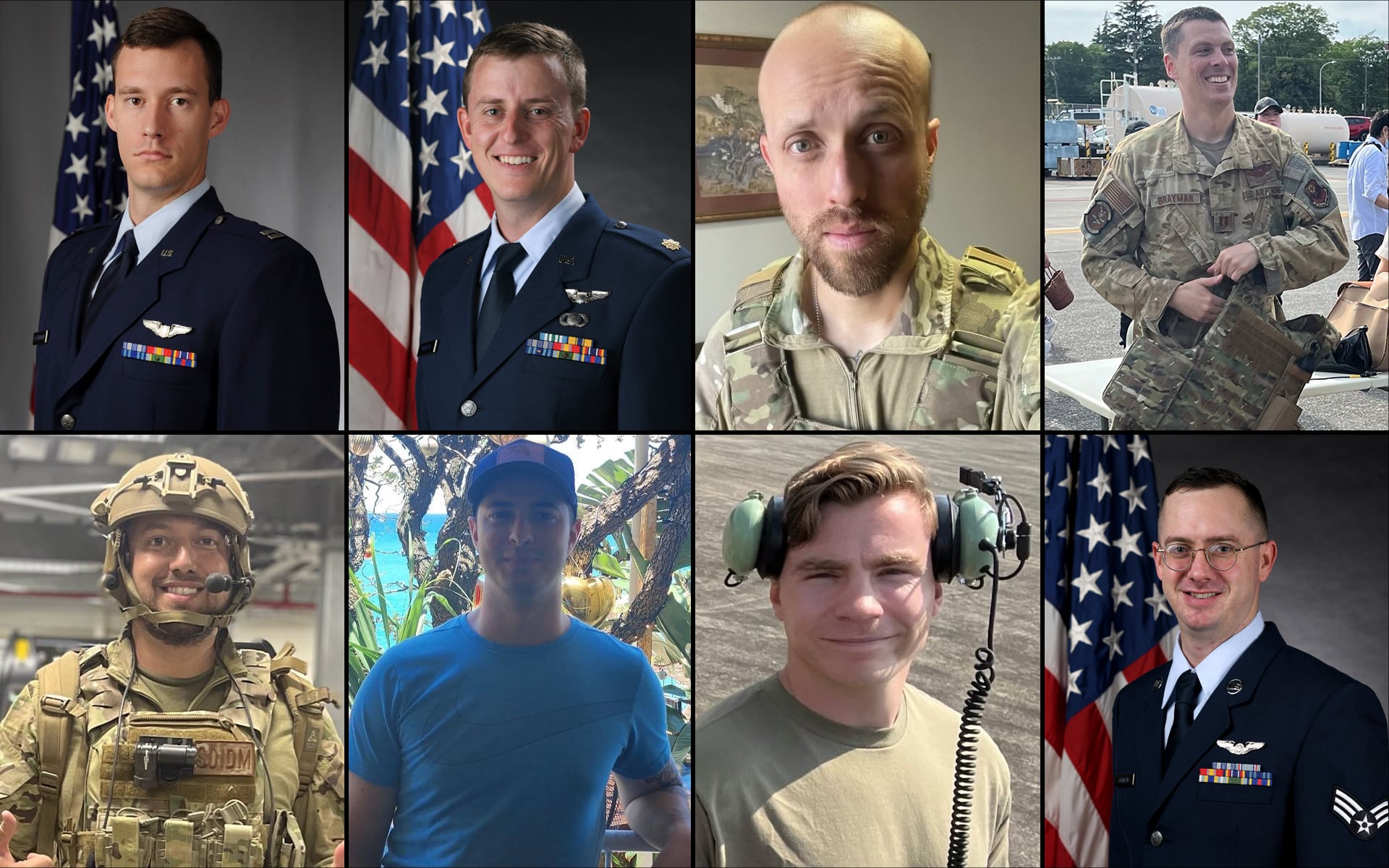Two Air Force special operations commandos will be posthumously awarded the Distinguished Flying Cross nearly 14 years after the CV-22 Osprey they were flying crashed in southeastern Afghanistan.
Air Force Secretary Frank Kendall authorized a review of the award after more details came to light about the actions of Maj. Randell Voas, 43, and Senior Master Sgt. James Lackey, 45, who died in April 2010 when their tiltrotor Osprey suffered an “unknown mechanical mishap,” according to Air Force Special Operations Command. Both men were assigned to the 8th Special Operations Squadron at Hurlburt Field, Florida.
RELATED

In a March 6 release, Air Force Special Operations Command credited Voas, the Osprey’s pilot and flight lead, and Lackey, the aircraft’s flight engineer, for their “superior airmanship” while the aircraft went down, also killing an Army Ranger and a civilian contractor. Sixteen other passengers on the Osprey were injured, including the aircraft’s co-pilot and tail scanner.
“Randy and JB’s actions in the face of chaos is what all air commandos train for,” Air Force Special Operations Command boss Lt. Gen. Tony Bauernfeind, who approved the award, said in a March 6 release. “I am grateful that we are able to recognize their final acts.”
The incident occurred April 9, 2010, as the Osprey led a team of three aircraft on a 14-minute route from an outpost in Afghanistan to a landing zone near the southern city of Qalat. While the crew anticipated good weather, they hit unexpected tailwinds a little more than 11 miles from their intended destination, and Voas deviated from the flight plan, according to an Air Force investigation.
The aircraft began to slow down a half-mile too late and struck the ground a quarter-mile from its intended landing spot at more than 90 miles per hour, shortly after 12:30 a.m. local time, investigators found. The aircraft managed a “nearly perfect” touchdown on its landing gear, investigators said, before its nose gear collapsed. The CV-22 hit a ditch and flipped forward. The impact snapped off the left wing, which caught fire, and also severed the right wing and tail from the aircraft’s fuselage.
RELATED

The Taliban initially took responsibility for the crash, saying they shot the plane down, which the Air Force later discredited.
While Air Force investigators said they were unable to pinpoint the cause of the crash because the Osprey’s flight incident recorder and right engine wing were destroyed, their findings listed 10 equipment-related and personnel problems they believed substantially contributed to the incident.
The crew suffered an “unanticipated high rate of descent,” investigators said, as well as engine power loss; the tailwind, and a challenging visual environment in which to fly. But the situation was complicated by inadequate weather planning; a poorly executed, low-visibility approach; a distracted co-pilot; behavior the co-pilot learned in a previous aircraft; the stress placed on a busy crew; and their push to accomplish the first combat mission of the deployment.
The crash was the first fatal accident in the Air Force’s Osprey variant, the CV-22, since the special operations aircraft became operational in 2006.
Voas, a former Army chief warrant officer, received his Air Force commission in 1999 and flew MH-53 Pave Low and UH-1 Huey helicopters before training on the CV-22 in 2006, according to a 2010 news release. He earned the Cheney Award in 2003 for his work airdropping the Army’s 173rd Airborne Brigade over Bashur in northern Iraq, marking the largest combat airdrop since the Vietnam War.
Lackey joined the Air Force in 1986 as an A-10 Thunderbolt II and F-15 Eagle crew chief and later retrained as an MH-53 flight engineer. He earned various medals and awards, including another DFC in 2002, for his actions during Operation Enduring Freedom.
The Air Force said it is still determining when it will award the Distinguished Flying Cross, the Pentagon’s highest award for extraordinary aerial achievement, to Voas and Lackey’s next of kin.
The announcement of posthumous awards comes as the U.S. military continues to dig for answers about a Nov. 29 crash that killed eight Air Force special operations airmen when their CV-22 crashed into the sea off the coast of Japan during a training exercise.
The U.S. military on March 8 allowed the Air Force, Navy and Marine Corps to resume flying their respective Osprey fleets after the accident prompted a three-month standdown and multiple investigations. The crash marked the deadliest Air Force mishap since 2018, and was the latest in a deadly string of Osprey incidents that have killed 20 U.S. troops since March 2022.
Courtney Mabeus-Brown is the senior reporter at Air Force Times. She is an award-winning journalist who previously covered the military for Navy Times and The Virginian-Pilot in Norfolk, Va., where she first set foot on an aircraft carrier. Her work has also appeared in The New York Times, The Washington Post, Foreign Policy and more.



